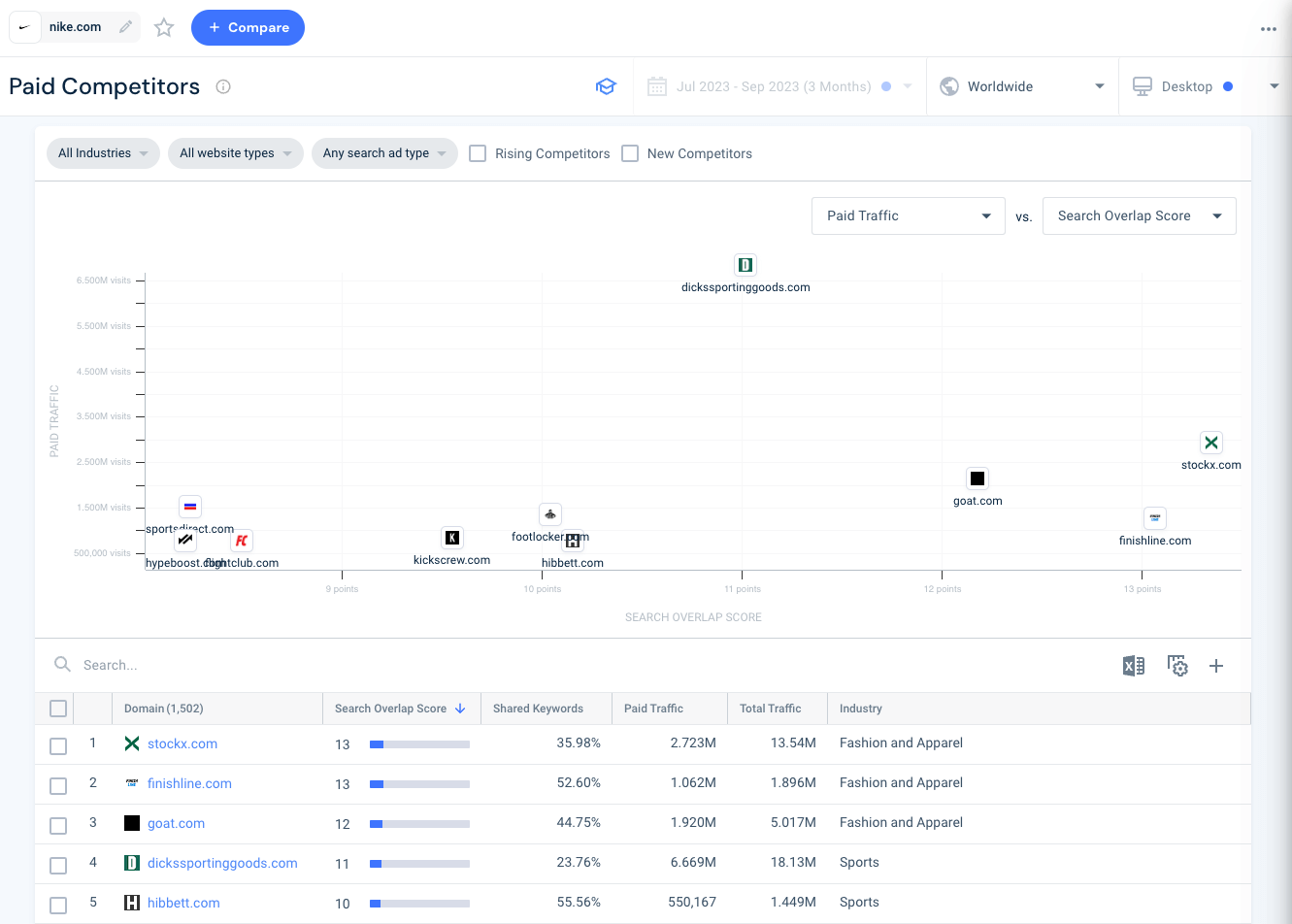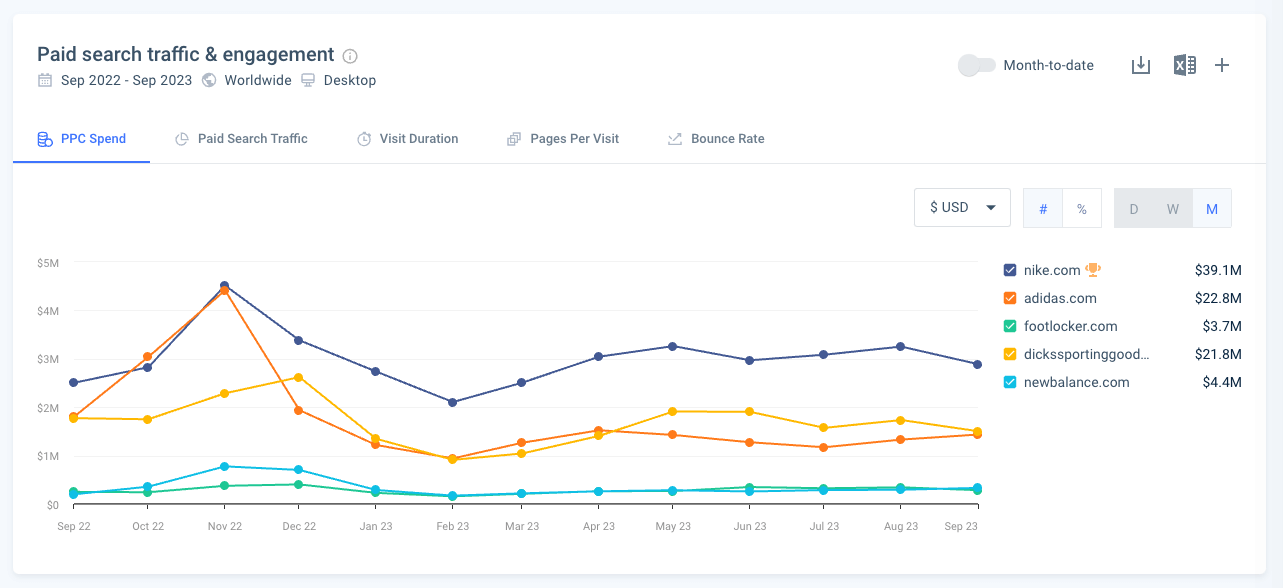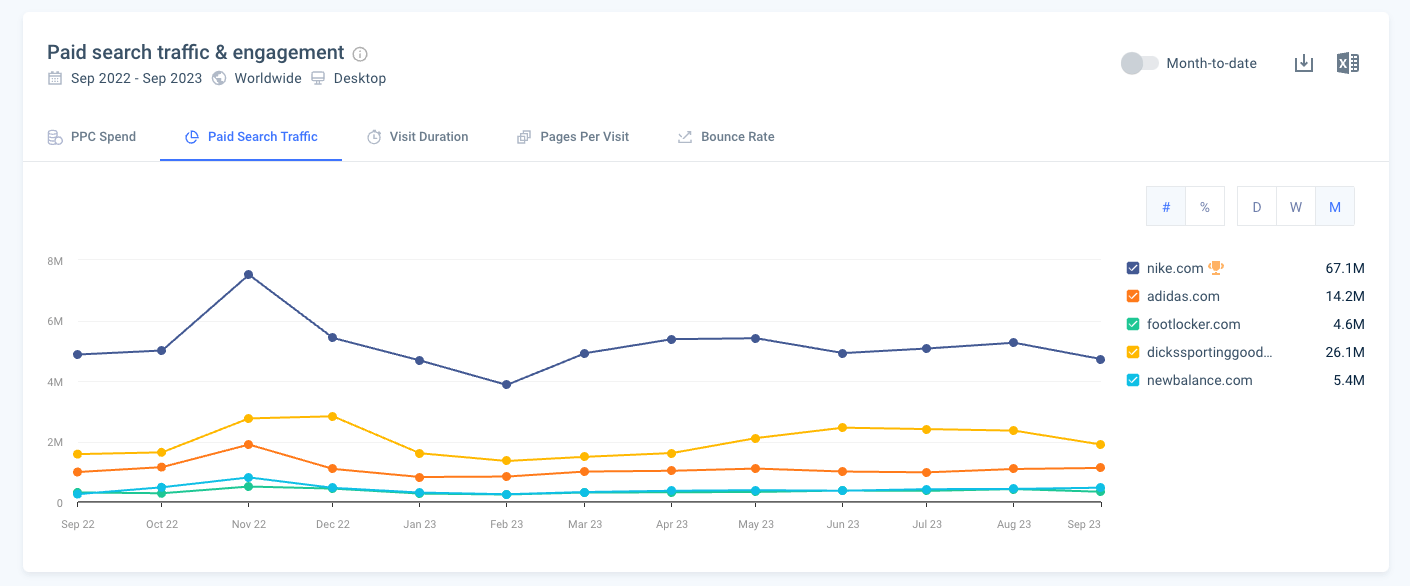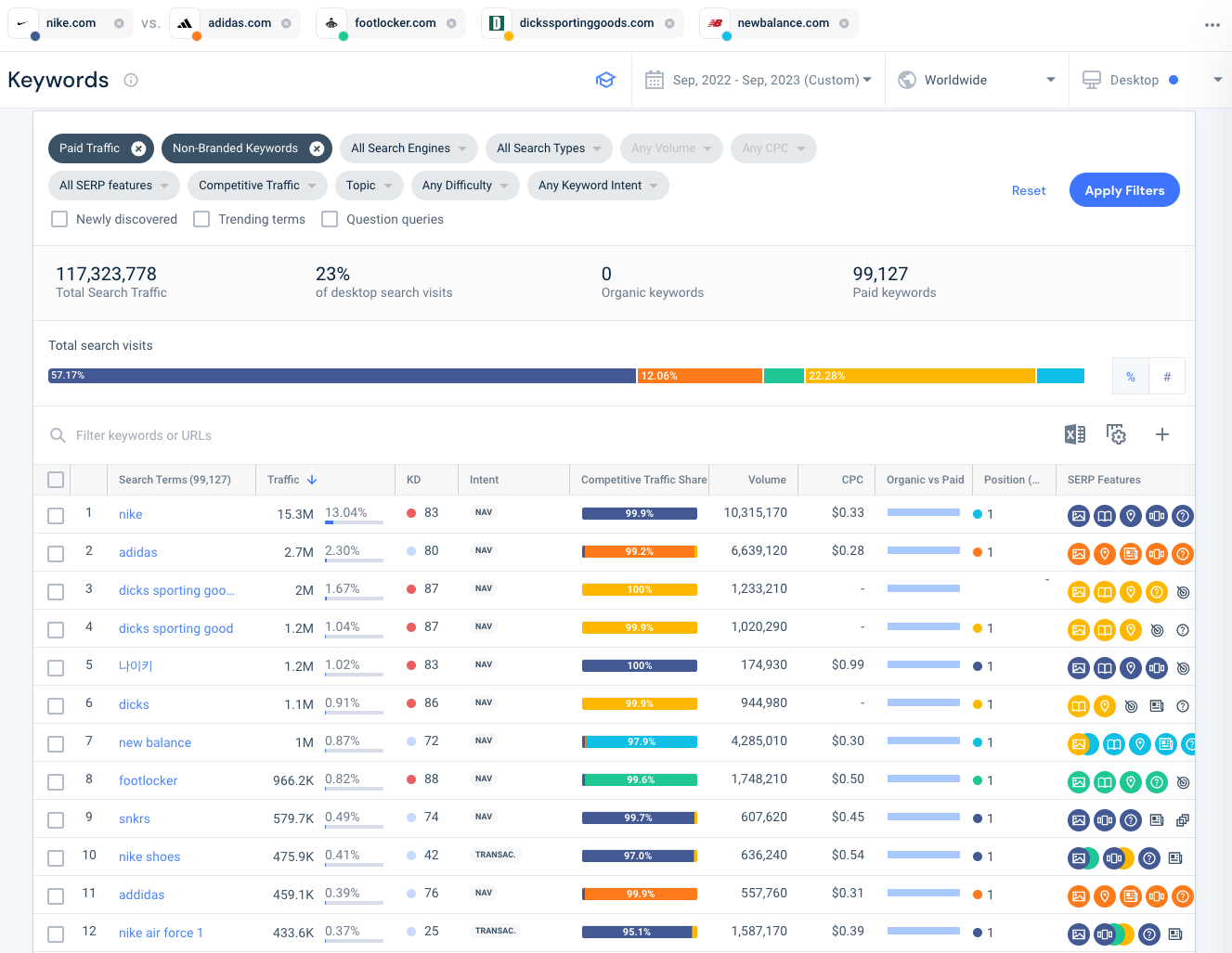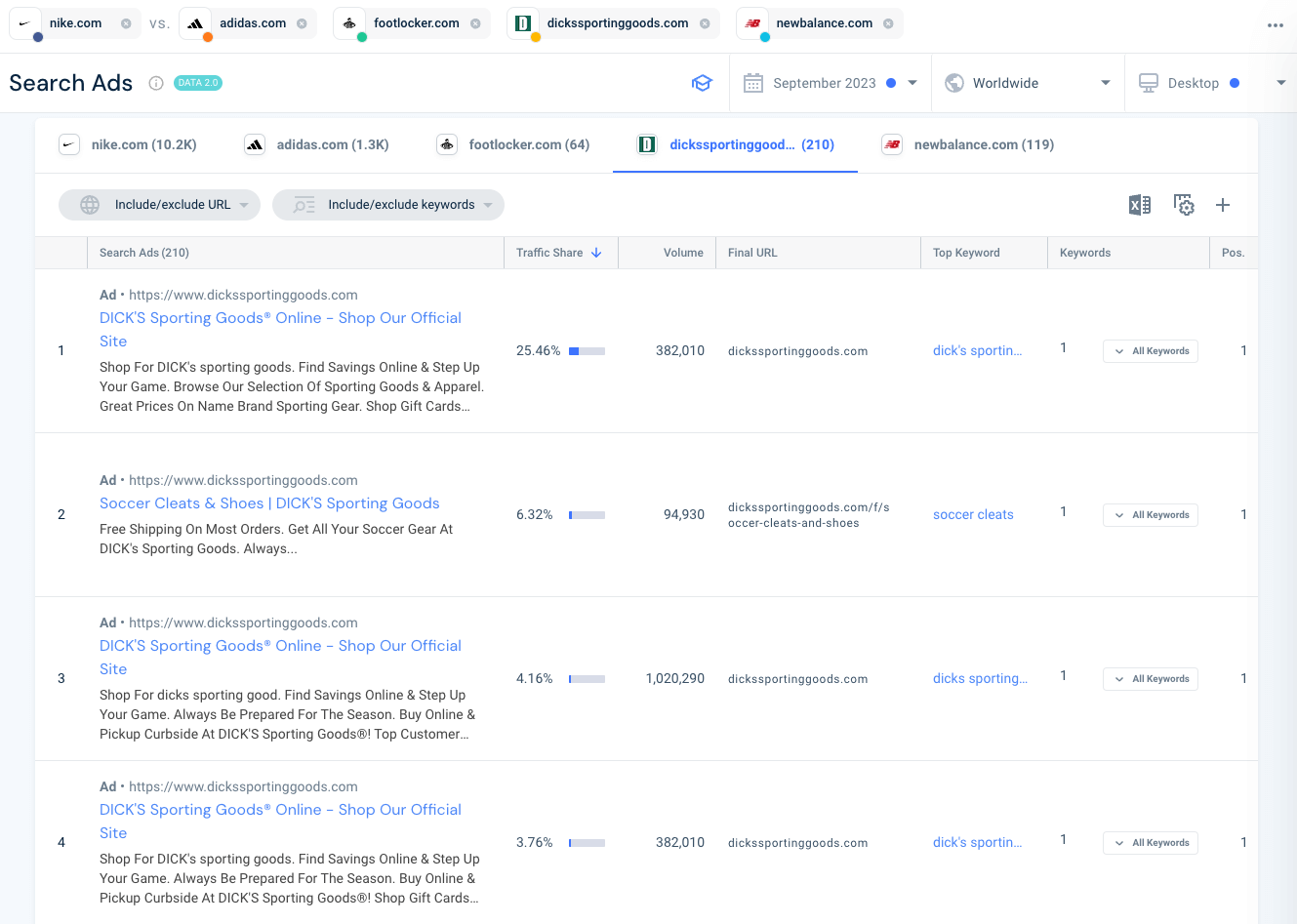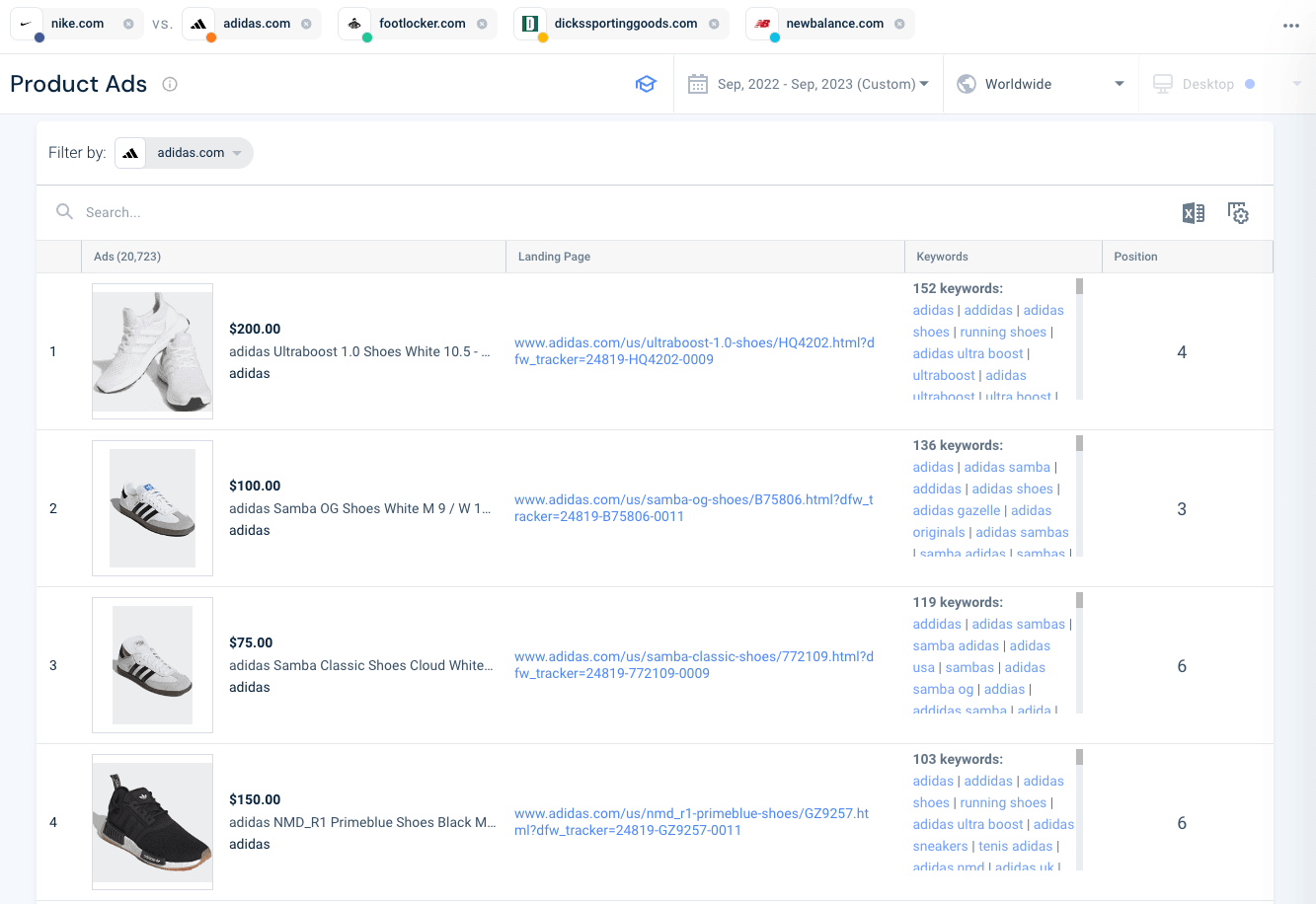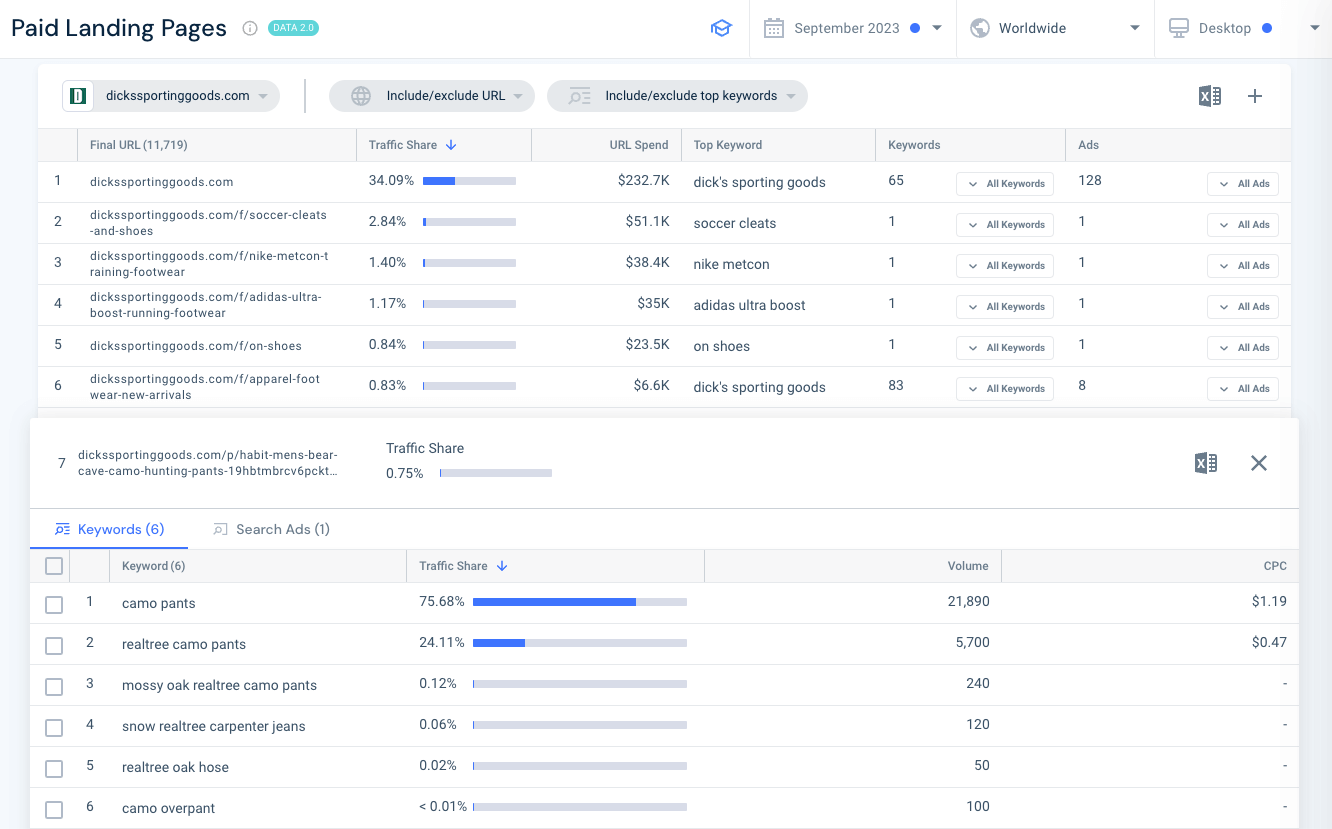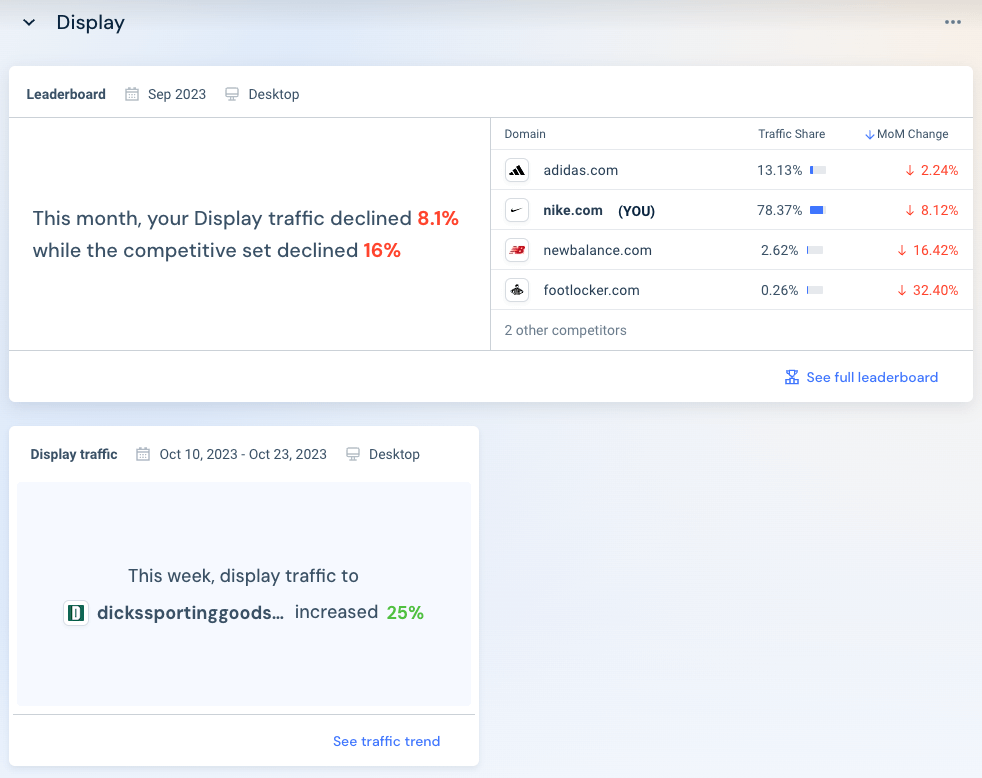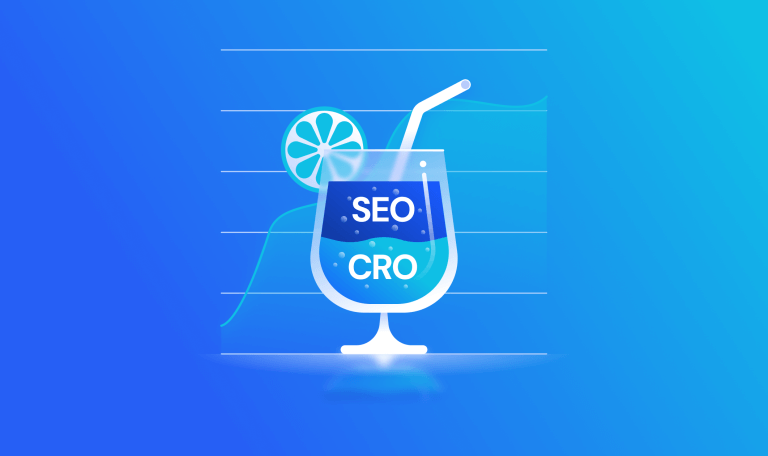How to Spy on Your Competitors’ PPC Campaigns

Those top paid spots in search results are hotly contested 🔥
Your PPC campaign’s success hinges on how well you understand ‘what clicks’ with your audience – and whether you can turn those clicks into meaningful results for your business.
While there’s no fast-track to success, you can work out what’s already ‘clicking’ for your competitors.
Uncover how much they spend, which keywords drive the most traffic and what makes their ads so irresistible.
With Similarweb as your guide, you’ll learn how to check competitors’ campaigns for the secrets to a winning PPC strategy.
Why should you spy on your competitors’ PPC campaigns?
Every click, every keyword, and every ad you place could make or break your PPC campaign. It can be difficult to know where to begin, leaving you wondering how to get your ads seen – and make them stand out – in search results.
Being able to spy on your competitors’ best-performing campaigns is like having a compass to point you in the right direction.
Analyzing your competitors’ campaigns will help you:
Find new opportunities: Pinpoint high-traffic keywords, untapped market opportunities and niches that you’ve previously overlooked or undervalued.
Optimize your budget: Learn which keywords, ad placements and seasonality drive the most conversions and revenue.
Connect better: Learn more about the customers you’re trying to reach. Competitors’ campaigns can reveal key demographics, preferences and behaviors of your audience, so you understand what resonates with and spurs them into action.
How to check competitors’ campaigns
1) Find your PPC competitors
The first step is finding out who you’re going to be spying on 🔎
You can do this simply by searching for industry-related and product/service specific keywords on Google to see which ads come up in search results.
Then, broaden your search for PPC competitors by searching for long-tail keywords and more specific, niche terms to see if ads from different competitors pop up. This should give you a pretty good idea of who you’re competing against.
For an easier way to find your top PPC competitors, there’s Similarweb’s Paid Competitors tool.
Simply type in your website and get a visualization of where you stand in the PPC landscape. You’ll see your top competitors along with added insight into the degree of overlap between you:
You can switch between multiple metrics to see how your view of competitors changes. With the ability to compare total traffic, paid traffic, search overlap and shared keyword percentage, you will have laser-like focus on those you are competing closely with.
2) Identify the traffic leaders
Now that you’ve pinpointed the full scope of competitors, you must find out which are getting the biggest share of paid traffic. This will shed light on the paid strategies you should prioritize in your analysis.
Check which competitors are driving the most paid traffic using Similarweb’s Paid Search feature. Add in your website along with up to 4 competitors to get an overview of their paid search traffic trends over a specific period:
3) Find out how they’re doing it
Once you know which competitors are driving the most paid traffic, the next step is to discover the ingredients to their success. What’s in their winning mix?
Here, we’ll go through how you can spy on your competitors’ best-performing PPC campaigns using Similarweb’s platform.
Analyze their PPC Spend
There’s a lot riding on your budget decisions. Under-spending, overspending or simply some bad timing can lead to less ad visibility and budget down the drain.
That’s why it’s so crucial to learn from your competitors’ spend strategies, so it’s less trial and error and more bang for your buck.
Inspect competitors’ PPC spend to:
- Reveal how much budget is needed to claim the top paid spots in your industry – a great benchmark and guide for future campaigns
- Reduce wasted ad spend – when you put budget behind keywords proven to drive traffic, you’ll naturally boost ROI
- Highlight ad seasonality trends: are they spending more during the holiday season? This could point to when your target audience is more responsive to ads
- Assess when their ad spend decisions paid off (see how below)
In this example, it looks like PPC spend surges between November and December across the entire competitive set.
When you compare your competitors’ PPC spend with their paid traffic trend (next tab along) you will see if that extra ad spend resulted in actual traffic:
Here, we can see that Nike’s extra November ad spend paid off with a spike in traffic, but Adidas spent just as much that month with little reward. From here, you can investigate what Nike did right but also what went wrong with Adidas’ campaign.
Dive into their keyword strategy
Discovering your competitors’ most lucrative keywords is the next part of the puzzle. These are the words and phrases consistently driving traffic to their websites.
With the right target keywords, you can allocate budget shrewdly, and optimize your ads and landing pages for more clicks and conversions.
Find these hidden keyword gems with Similarweb’s PPC Keyword Analyzer feature. Enter in your top competitors, filter by paid traffic and remove branded terms to unlock their high-traffic keywords:
Delve deeper with the many metrics on offer. Look into the top keywords’ search volume, search intent and CPC to help you decide which could have the biggest impact on your own campaigns.
Review their ads
In the world of PPC, ads are the main event 🌟
Keywords will get your ads in front of the right eyes, but if your ads fail to catch their attention, it could be all for nothing.
That’s why you need to analyze your competitors’ traffic-driving ads to find out what engages your specific audience.
Spying on your competitors’ ads is not about copying them word-for-word, it’s about understanding what resonates with your target audience so you can connect better – even beyond the initial click.
Aspects to analyze:
- Pain points: which problems are being solved/addressed?
- Tone of voice: how does your audience like to be spoken to?
- Messaging: what does your audience want to hear?
- Benefits: what benefits and features are highlighted?
- CTAs: what encourages your audience to actually click through?
Check out our guide on how to spy on your competitors’ google ads for more info on competitive ad analysis.
To find your competitors best performing ads, you can use Similarweb’s Search Ads Analytics feature. Add in your competitors to see their top ads, exactly as their appear in search results:
Review the ads closely to spot which copy sparks action, and get super granular by looking at traffic share, estimated ad impressions, keywords and average ad position.
If you’re in the ecommerce world, you can find the product ads driving your competitors’ shopping campaigns with Similarweb’s Product Ads tool. Here, you can dissect the imagery, ad copy and keywords of their best product ads:
Examine their landing pages
When it comes to your PPC campaign, you don’t want to fall at the last hurdle.
Even with the right target keywords and super clickable ads, you’ve still got to get them to convert once they’ve clicked through. And that’s where landing pages come into the mix.
Whether your campaign is geared to downloading a guide, filling out a form, booking a discovery call or buying a product, your success could be cut short if your landing page doesn’t meet your audience’s expectations and needs.
So, the final step is analyzing your competitors’ top performing landing pages and their best practices to extract their best conversion strategies.
Here’s what to analyze:
- User experience: Check the loading speed, ‘skimmability’ and navigation
- Design: Find the ‘wow’ factor on every page
- Copy: is it relevant, engaging and informative?
- CTAs: do they use buttons, pop-ups or text?
To find your competitors’ top landing pages, use Similarweb’s Paid Landing Pages Analyzer tool. We’ll show you the traffic share, URL spend (based on CPC and paid visits) and top keyword for each of their high-traffic landing pages:
View ‘All Keywords’ for deeper insight into every single keyword driving traffic to the most successful pages:
Create your new paid strategy
Now we transform your competitors’ best tactics into a winning PPC strategy that works for your business. Start testing and experimenting with your newly found knowledge to see which strategies pay off to create a tailor-made PPC campaign that’s likely to succeed.
Here’s how to make that happen:
- Prioritize the high-traffic keywords that are most relevant to your audience, product/service and brand
- A/B test which of the content formats, messaging and CTAs that resonate with your specific audience (for both ads and landing pages)
- Pinpoint the best time of year to launch your campaign
- Continuously monitor your competitors’ campaigns over time to stay on top of what engages your audience
Monitor over time
There’s no easier way to keep track of your competitors’ PPC campaigns than with Similarweb’s Competitive Tracker.
Our tracker can monitor everything from your competitors’ traffic trends and engagement levels to their social performance, but you can focus on the Paid Search and Display sections when tracking your competitors’ PPC campaign performance.
Track changes in paid traffic, and be alerted when your competitors bid on your paid keywords. Here’s what it could look like:
You can also keep tabs on your display ad traffic:
And know as soon as your competitors place new ad creatives:
From here, click into each new ad campaign to check for new and improved engagement strategies.
That’s all, folks
Thanks to our guide to spying on your competitors’ PPC campaigns, you know how to unlock the hidden secrets to their success and transform those tactics into a winning PPC strategy of your own.
You can now prioritize high-traffic keywords, optimize your ads and landing pages with the most compelling content and allocate your budget for maximum ROI. Most of all, you can connect better than ever with your target audience.
And, when you use Similarweb’s advanced Paid Search toolkit, you’ll have the insights to not only keep pace with but actually outperform competitors for those top paid positions.
FAQs
Why is it important to check my competitors’ PPC campaigns?
Checking your competitors’ PPC campaigns is important because it allows you to gain valuable insights into what drives their success. Understanding what your competitors are doing well can help you identify opportunities, discover high-performing keywords, make better ad spend decisions and optimize your own campaigns for more clicks and conversions.
How to check competitors’ campaigns for PPC
To find your competitors’ PPC campaigns, start by conducting Google searches using industry-related keywords and product-specific terms. Observe the ads that appear in the search results and take note of competitors. Alternatively, you can use Similarweb’s Paid Search toolkit to streamline this process and get deeper insight into their paid campaigns.
How should I analyze my competitors’ PPC campaigns?
Analyzing your competitors’ PPC campaigns involves examining various aspects, such as their ad copy, keywords, landing pages, and budget allocation to discover trends and strategies that drive their success. Use tools like Similarweb to dig deeper into their PPC data, gaining insights into ad spend, keyword performance, and more.
Should I monitor my competitors’ PPC campaigns?
Yes, it’s a good idea to monitor your competitors’ PPC campaigns regularly as their strategies may change over time. That way, you’ll stay up to date with their tactics, spot emerging engagement trends, and be able to make informed decisions to improve your own PPC campaigns.
The #1 PPC tool - get started
Give it a try or talk to our marketing team — don’t worry, it’s free!
